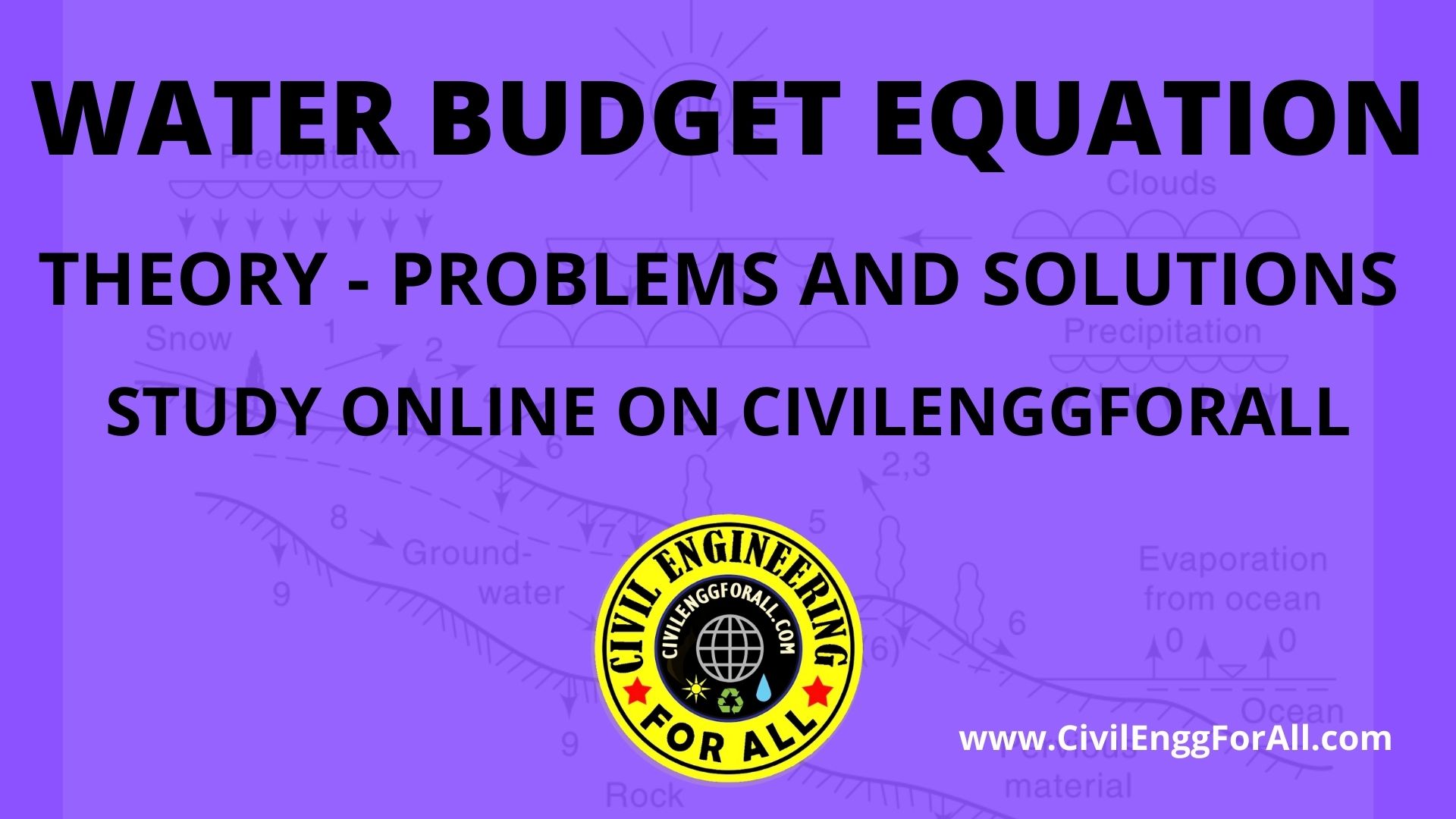SOLUTION
In a time interval Δt, the water budget for the lake can be written as
Input volume – Output volume = Change in storage of the lake
(IΔt + PA) – (QΔt + EA) = ΔS
Where I = average rate of inflow of water into the lake
Q = average rate of outflow from the lake
ΔS = change in storage volume of the lake.
Here Δt = 1 month = 30 X 24 X 60 X 60 = 2.592 X 106 s = 2.592 Ms
In one month,
Inflow Volume = IΔt = 6.0 X 2.592 = 15.552 M m3
Outflow Volume = QΔt = 6.5 X 2.592 = 16.848 Mm3
Input due to precipitation = PA = (145 X 5000 X 100 X 100)/ (1000 X 106) m3 = 7.25 Mm3
Output due to evaporation = EA = (6.10/100 x 5000 X 100 X 100)/106 = 3.05 m3
Hence ΔS = 15.552 + 7.25 – 16.848 – 3.05 = 2.904 m3
Change in elevation Δz = ΔS/A = (2.904 X 106)/(5000 X 100 X 100) = 0.058 m
New water surface elevation at the end of the month = 103.200 + 0.058 = 103.258 m above the datum

